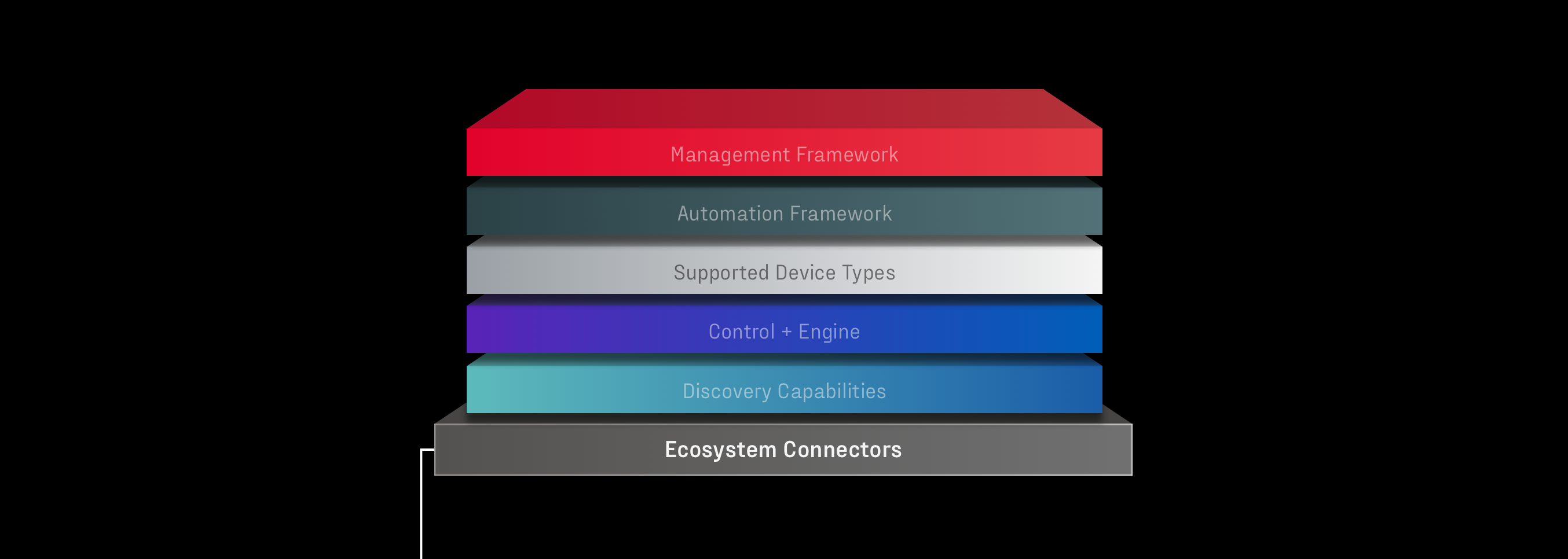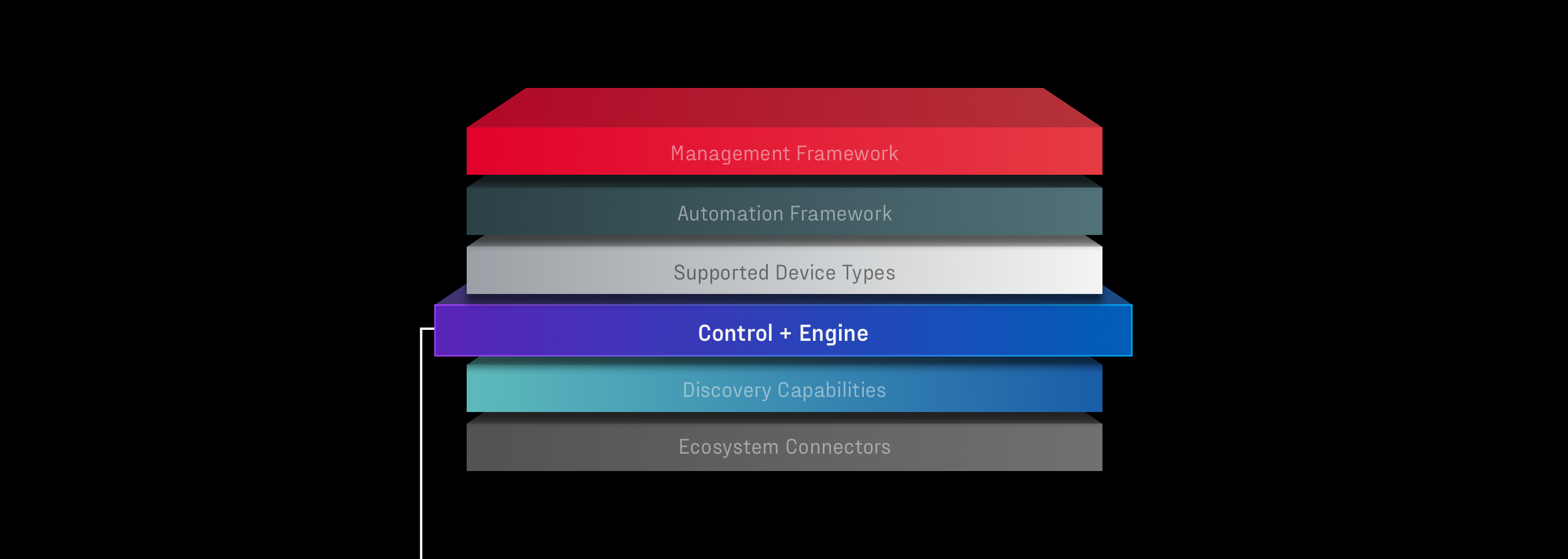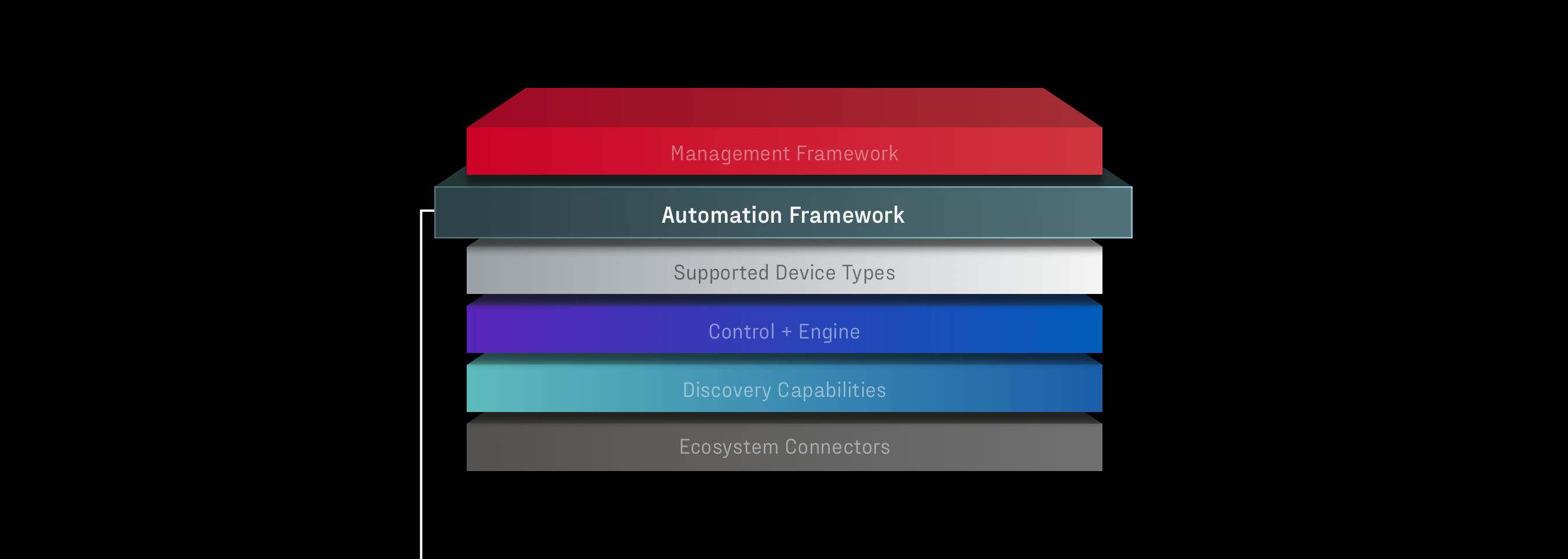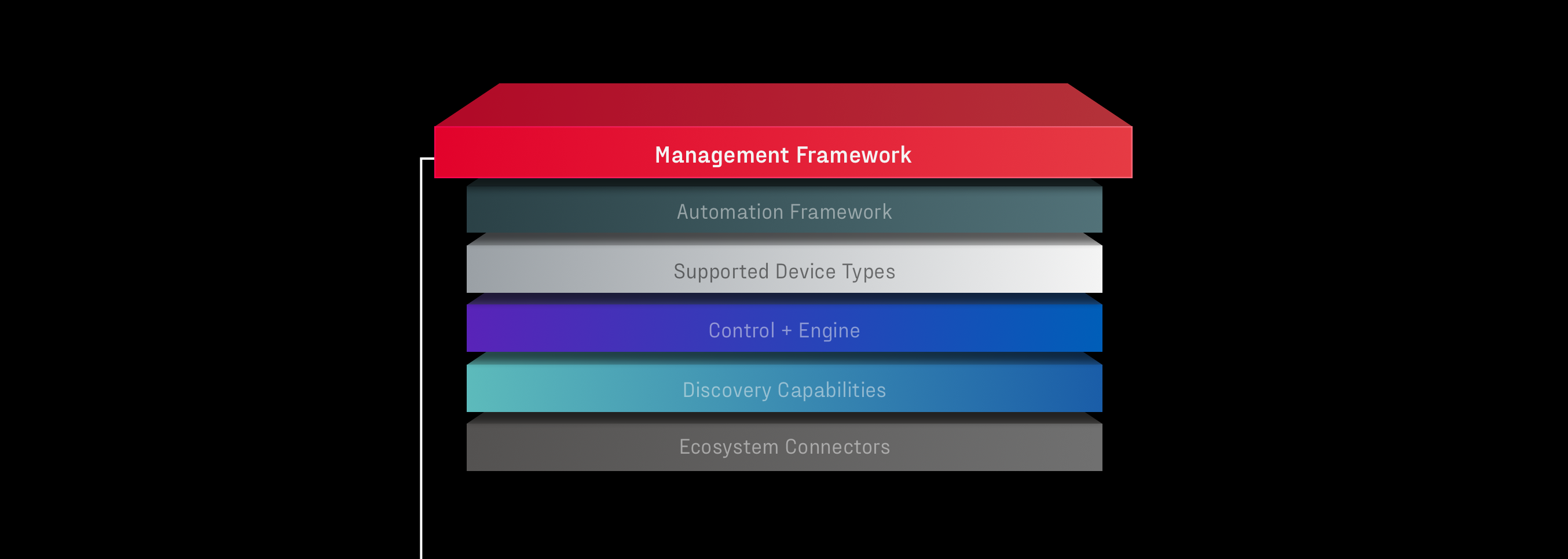QuickSet® Architecture
The foundation of QuickSet® is built on a set of Frameworks, Engines and Capabilities, through which QuickSet® is able to offer its powerful discovery and control features, functions and services.

Ecosystems | Discovery | Control | Support | Automation | Management

Ecosystem Connectors
At the base layer, QuickSet® defines the available physical interfaces or connectors to devices that it includes in its knowledge graph. These include wired interfaces over HDMI or Ethernet, as well as wireless interfaces such as WiFi, Zigbee or Bluetooth

Discover Capabilities
At the second layer, it contains the knowledge and understanding of the devices it is connected to.
The starting point is the global device knowledge graph that provides device properties and meta data such as brand name, model and series information, manufacturer, current capabilities and offerings, their physical and software characteristics, compatible devices, region information, and much more. In order to intelligently grow our device knowledge graph as well as to intelligently search inside this ever-growing knowledge graph, QuickSet® is supported by Discovery, Predictive and Search/Prioritization Engines.
The Discovery Engine automatically identifies connected devices by calculating fingerprints and matching the information against the device knowledge graph, across different interfaces including HDMI, IP, and Zigbee rf4ce networks without any user intervention. It returns a device object including device type, brand, model, and control information.
The Predictive Engine leverages the knowledge graph of devices to predict the identity of a device and its associated attributes. Using its device fingerprinting technique and leveraging the constantly growing knowledge graph of devices, it extends the automatic discovery and control capabilities of QuickSet®.
The Search Engine provides an optimized route for users to quickly search and narrow down the meta data and control information for their devices. Additionally, this engine includes a wizard driven process for setting up devices for a disconnected control point. Part of the Search Engine is the Prioritization Engine which allows for intelligent filtering, prioritization and model search capabilities based on market and location specific meta-data help in simplifying on-screen wizard to only what is relevant to the consumer, improving the user experience.

Control+ engines
The third layer include the Control+ Engines and allows for efficient and extended access to a device’s control capability.
It offers (1) HDMI-CEC and Infrared control capabilities, including discrete functions that may not even be available on the original remote control. It handles the complexities of interacting with HDMI network and IR drivers on the host device and automatically sets up the control point to control the target device utilizing a unified interface for the transfer of data and control messages between connected devices. Moreover, its complex aircon Infrared engine offers state-based control of temperature, ventilation speed and many more non-connected HVAC system features.
In addition, it offers (2) Internet Protocol (IP) control services via both the Local Area Network (LAN) in the home as well as via (3) Cloud-to-Cloud integrations. Over IP, it tracks the state of devices from connectivity, online or offline, to active content, to power status and other useful information, while also providing a history of actions executed for easy navigation across devices and content and many more use cases. Via Cloud integration it enables extended capabilities including device authentication, control and automation.
Furthermore, Control+ Engine includes control over (4) Zigbee RF4CE for Non-Line-Of-Sight (NLOS) control of set-top-boxes, and it has built-in support for (5) dotdot over Zigbee 3.0 devices to make it a full featured framework for connected home, bringing smart home applications to any device running QuickSet.
And lastly, Control+ Engine includes control over (6) Matter for devices that support the newly launched communications standard. In addition to unifying the control capabilities across legacy and these new Matter devices, the Engine also helps to unify the onboarding experience of Matter devices across different brands for each Matter device category.

Supported device types
The next layer clusters the different devices types into logical device grouping and help to unify the user experience for each category across model and make. It contains home entertainment devices such as your smart television, streaming media player, set-top-box, game console as well as audio video receiver or sound bar. In addition, it clusters IoT devices such as smart home hubs or gateways, as well as nodes such as smart home sensors, switches, plugs, lights, blinds, door locks, door video bells, security cameras, thermostats, air conditioners and many more.

Automation Framework
The fifth layer includes the automation framework that allows for intelligent interaction between the user and the different device types. Firstly, it includes a complete IoT messaging framework, enabling secure, bi-directional communication between connected devices and cloud applications. Multiple messaging patterns are supported to address a wide range of use cases such as secure remote access, monitoring and automation from the cloud. Secondly, it include a complete virtual machine based framework for delivering automation and interoperability to capable IoT Edge devices, including cross-platform scripting capabilities, and rule based control engines across many common interfaces used in entertainment and smart home devices. Capable of delivering the intelligence needed even when device is offline. And lastly, the Automation Framework offers an Activity Engine which is Addressing most common use cases, automatic generation and management of optimized activities based on templates, including One Touch View to enable users to instantly access the desired content, app, or device with a single command, regardless of current state of the set-top box, TV or connected media device(s). Unlike many of the solutions on the market today, this must-have engine is not limited to a single protocol, and can deliver a continuous experience across entertainment and smart home devices.

Management Framework
The final layer of the QuickSet® Framework includes the Management Framework allowing many of the advanced services to be reliably and securely executed over millions of devices in the field. Firstly, it offers a full-featured device management cloud system that provides a powerful dashboard for managing device virtualization, templates, properties, rules and schedules. It also provides device management tools and framework for monitoring device fleet health and status. Secondly, it enables secure remote access to your connected devices, built on a reliable IoT messaging framework. This is used in many core applications such as to provide remote control or access to consumers through a mobile application, or in service-oriented scenarios remote assistance by technical support teams. Furthermore, the Management Framework extends system configuration (including discovered devices and smart activities) to a secondary screen or control point. Allows synchronization across mobile devices, or mobile device with compatible Smart TV or Set-Top box, based on enhanced configuration format, including activities and labels. And thirdly, it provides for Interoperability with other devices and services in the home and is delivered as a service with the controls needed to manage the brand experience. This provides the services necessary not only to interact with other devices within the home, but also delivers compatibility with other ecosystems such as hubs and assistants, while removing the burden of implementing and maintaining this growing list of compatibility requirements from OEMs.
The UEI difference
Our solutions help consumers easily control and connect devices in their home. Learn more.
- Markets
- Capabilities
- Solutions
-
About
-
Investor
-
Connect
Copyright © 2025
